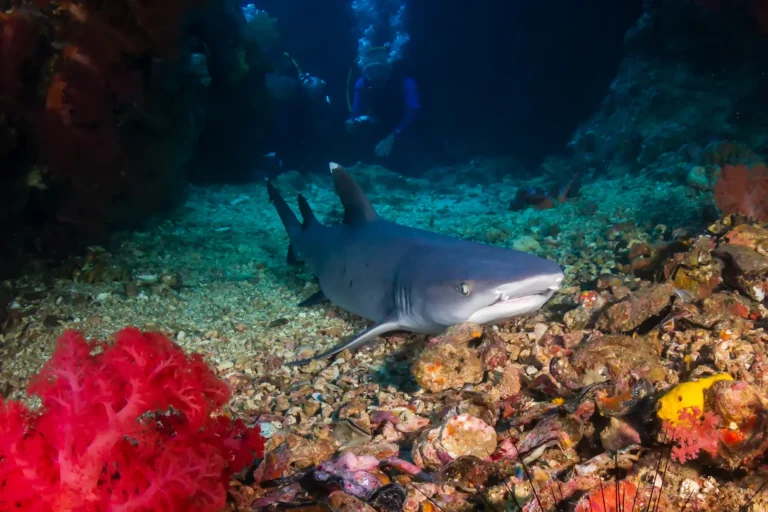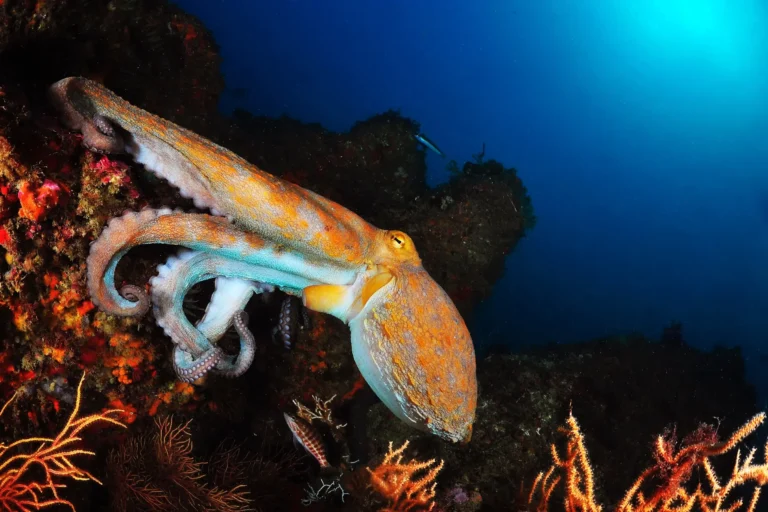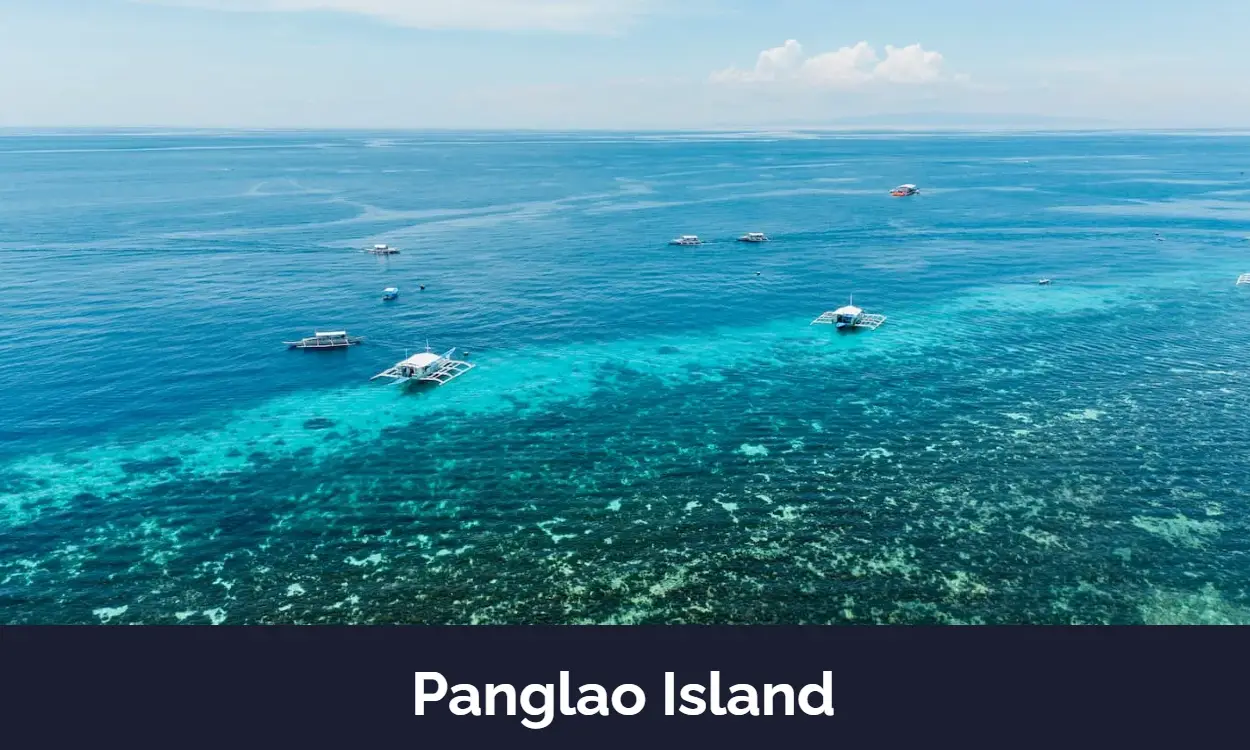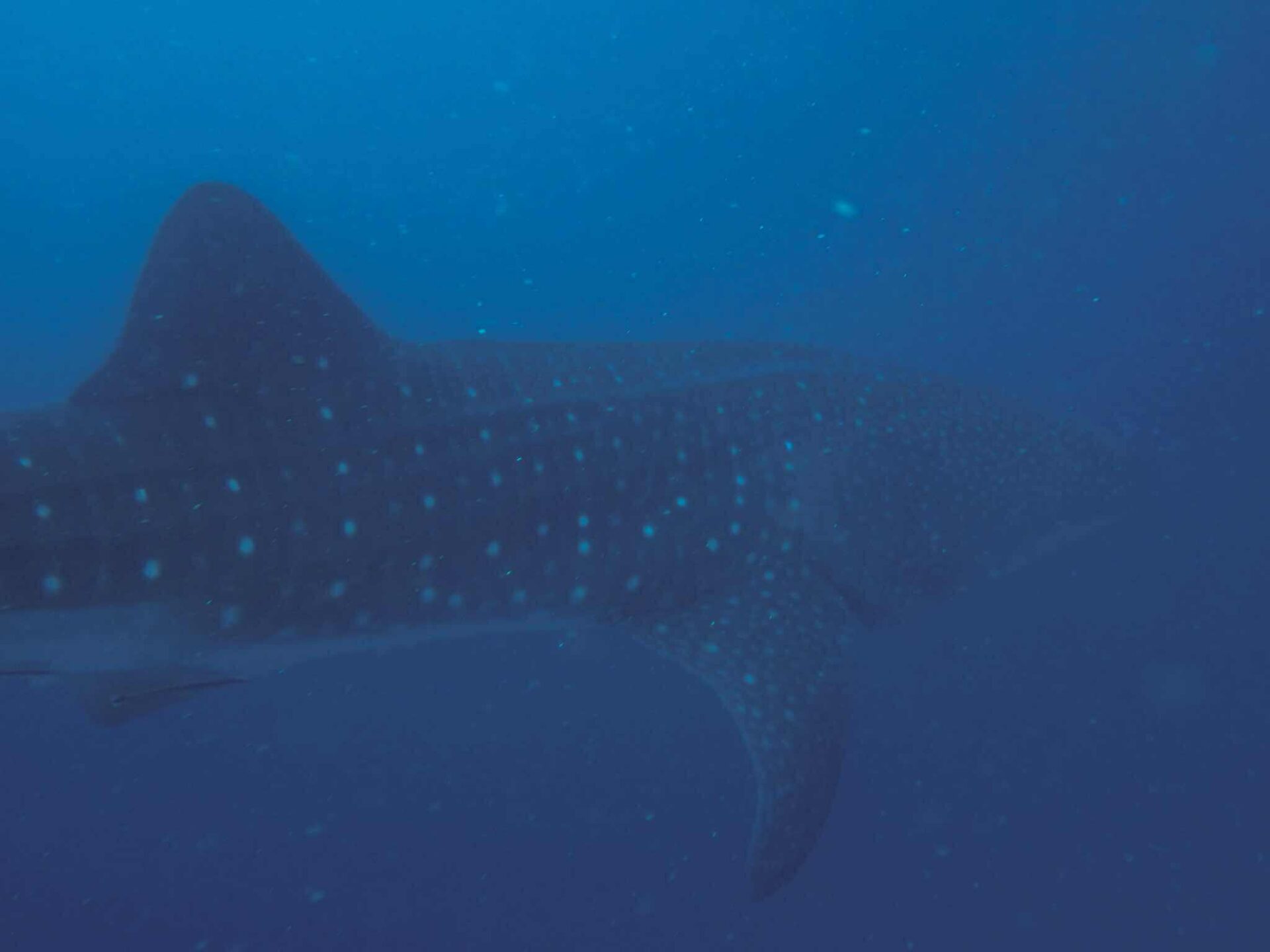The Thrill of the Chase: A Guide to Shark Encounters in Bohol
For many divers, there’s one sight that gets the heart pounding like no other: a shark gliding effortlessly through the blue. It’s a moment of pure, untamed nature—a powerful reminder of the wildness that still exists beneath the waves. Here in Bohol, while we’re famous for our vibrant reefs and kaleidoscopic fish life, the possibility of a shark encounter adds an extra layer of excitement to every dive.
At Sierra Madre Divers, we believe in responsible adventure. Sharing our waters with these magnificent apex predators is a privilege, not a guarantee. So, let’s talk about the sharks of Bohol. Who are they? When can you see them? And what’s the realistic chance of turning your dive into a “Jaws-dropping” story for your friends back home?
First, A Dose of Reality
It’s important to set clear expectations. Bohol is not a destination where shark sightings are guaranteed on every dive. These are wild animals in their natural habitat, and their presence is a special treat. An encounter depends on seasonality, dive site, luck, and a quiet, patient approach. The thrill is in the possibility, in scanning the deep blue and knowing that at any moment, a graceful predator might emerge. When it happens, it’s a moment you’ll never forget.
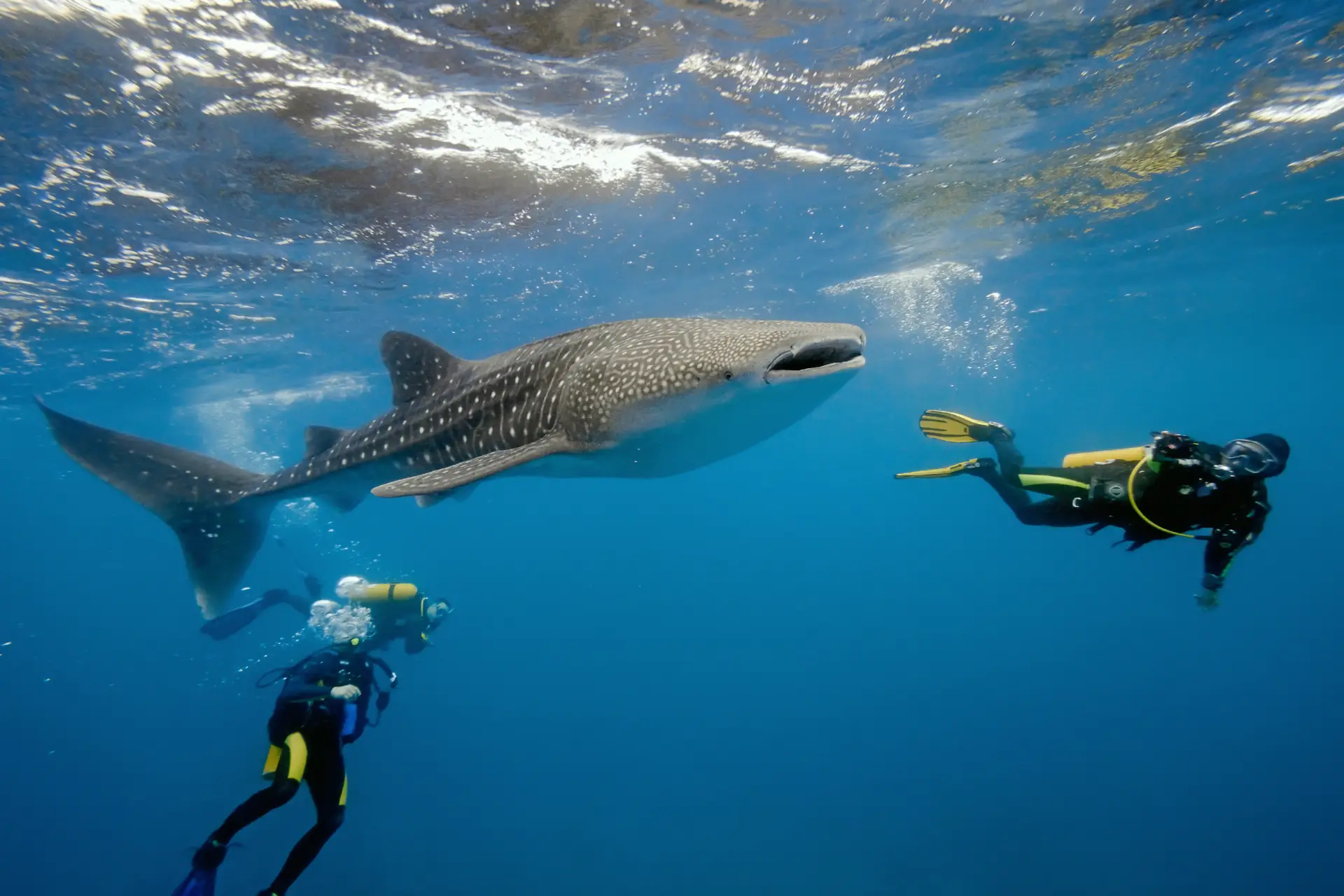
The Gentle Giant: The Whale Shark (Rhincodon typus)
The largest fish in the sea is, without a doubt, the most sought-after sighting in the Philippines. A true bucket-list encounter, the whale shark is a slow-moving, filter-feeding giant that poses no threat to humans. Seeing one of these magnificent creatures, with its vast, star-dusted back, is an experience that can move a diver to tears.
- What to Look For: You can’t miss them! These are colossal fish, often reaching lengths of 10-12 meters (30-40 feet). Their most distinct features are their wide, flat heads and their beautiful dark grey-blue skin covered in a unique pattern of pale spots and stripes.
- Seasonality: While sightings can happen at any time, the primary whale shark season in Bohol runs through the cooler, drier months. Your best chances are typically from December to June, with the peak usually occurring between February and May.
- Where to Look: Whale shark encounters are not common on the regular reefs around Panglao. They are more frequently spotted in specific areas where plankton, their primary food source, concentrates. Organized, respectful tours to areas near the town of Lila on the Bohol mainland are the most reliable way to see them. Occasionally, lucky divers might spot one in the open water near Pamilacan or Balicasag Island, but this is a rare and fortunate event.
- Responsible Interaction: This is paramount. As a PADI Dive Center, we adhere to the strictest guidelines. All interactions must be passive. This means no touching, no flash photography, no blocking their path, and maintaining a respectful distance of at least 4-5 meters. We are visitors in their world.
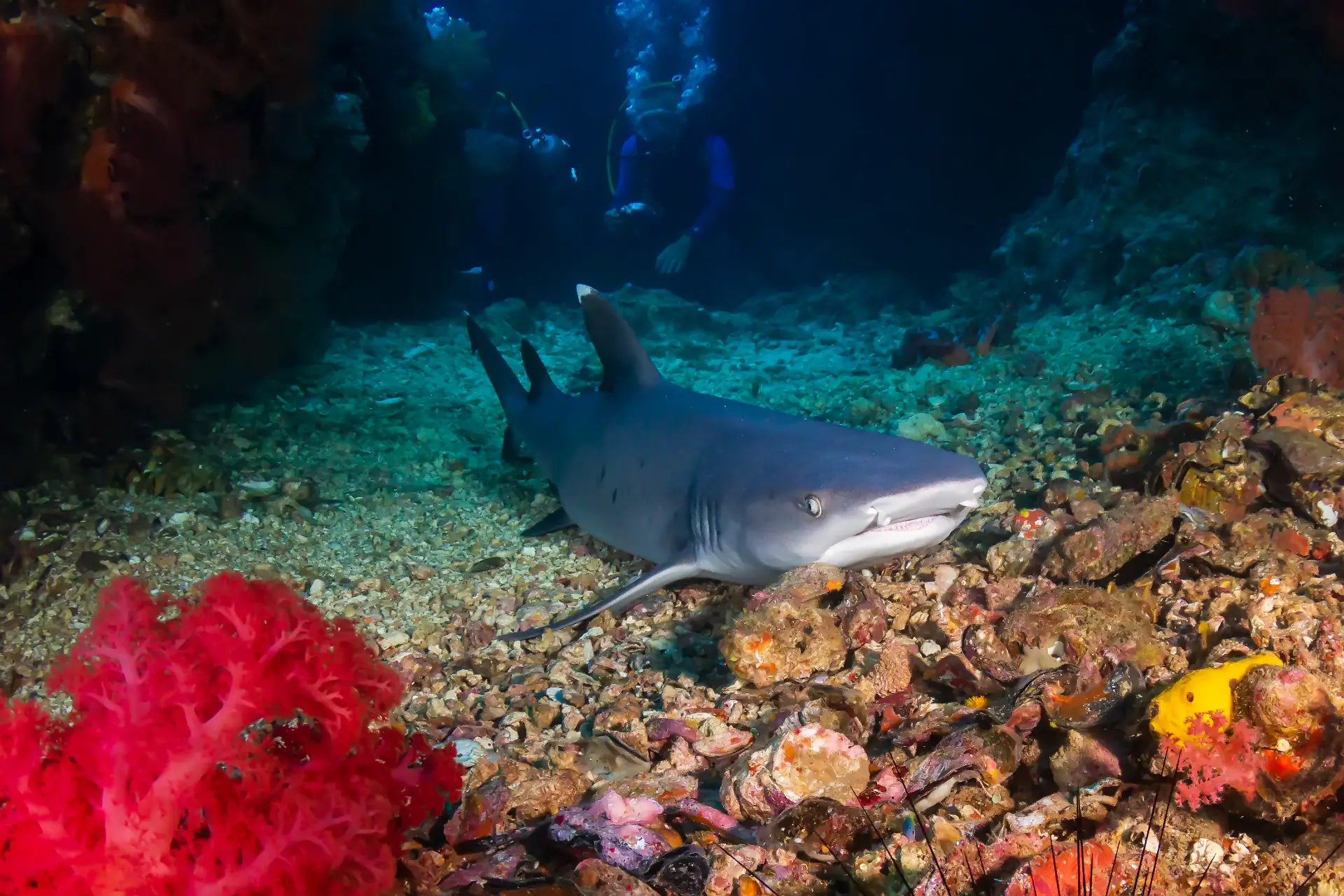
The Reef Guardians: Blacktip & Whitetip Reef Sharks
These are the sharks you are most likely to encounter on a classic reef dive around Bohol. They are the agile, elegant guardians of the coral ecosystem. Far from the fearsome reputation of their larger cousins, reef sharks are typically shy, cautious, and more scared of you than you are of them. A glimpse of a blacktip or whitetip is a sure sign of a healthy, thriving reef.
- What to Look For:
- Blacktip Reef Shark (Carcharhinus melanopterus): A relatively small, slender shark (usually 1.5 meters / 5 feet) easily identified by the conspicuous black tips on all of its fins, especially the dorsal fin. They are often seen in shallow water, sometimes with their dorsal fins breaking the surface.
- Whitetip Reef Shark (Triaenodon obesus): Similar in size, the whitetip is identified by the distinct white tips on its dorsal and upper tail fins. Unlike blacktips, they are often seen resting motionless on the seafloor or under ledges during the day, as they are capable of pumping water over their gills without swimming.
- Seasonality: Good news! As residents of the reef, these sharks are present year-round. Your chances of seeing them depend more on the dive site and conditions than the time of year.
- Best Dive Sites: The number one spot is unquestionably Balicasag Island. This protected marine sanctuary provides the healthy reef and abundant fish life that these sharks need. At sites like Rico’s Wall and Black Forest, divers frequently spot whitetips resting in crevices or blacktips patrolling the reef edge. The key is to look away from the reef and out into the blue.
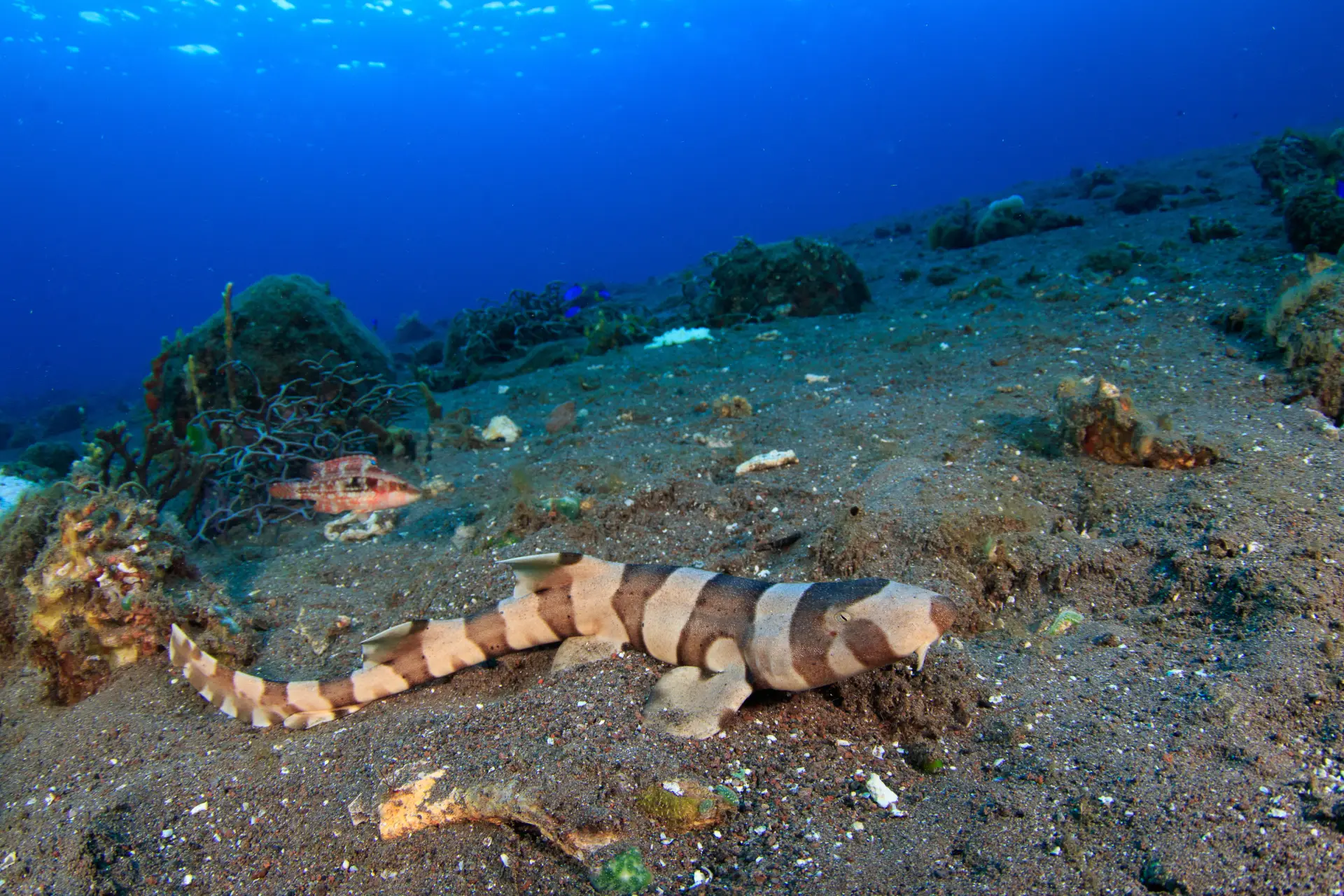
The Master of Camouflage: The Bamboo Shark
For the diver with a keen eye, there’s another, more cryptic shark to find. Bamboo sharks (Hemiscylliidae family) are small, bottom-dwelling creatures that are masters of camouflage. They are nocturnal hunters, so spotting one during the day means looking carefully under coral heads and in rocky crevices.
- What to Look For: These are small, slender sharks, rarely exceeding a meter (3 feet) in length. They have elongated, cat-like bodies, often with dark bands or spots, and small whisker-like barbels near their mouths which they use to search for prey in the sand.
- Seasonality: Like reef sharks, bamboo sharks are year-round residents.
- Where to Look: They can be found at many of Bohol’s dive sites, but they are hard to spot. They prefer rubble or sandy bottoms close to reefs. A slow, patient dive with a focus on searching under ledges might just reveal one of these shy creatures resting on the seafloor. They are a true reward for the observant diver.
Your Shark Encounter Awaits
Diving in Bohol is an adventure filled with incredible biodiversity. While we can’t promise a shark on every dive, we can promise a thrilling search. With every descent, especially around the stunning sanctuary of Balicasag Island, the possibility is there.
Join us at Sierra Madre Divers, and let our experienced local guides show you the best spots to look. We’ll teach you how to search for these incredible animals respectfully and safely. Because when that moment finally arrives—when a shark emerges from the blue and glides past you—it will be one of the most powerful memories of your diving life.

